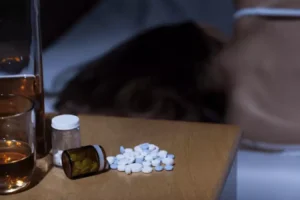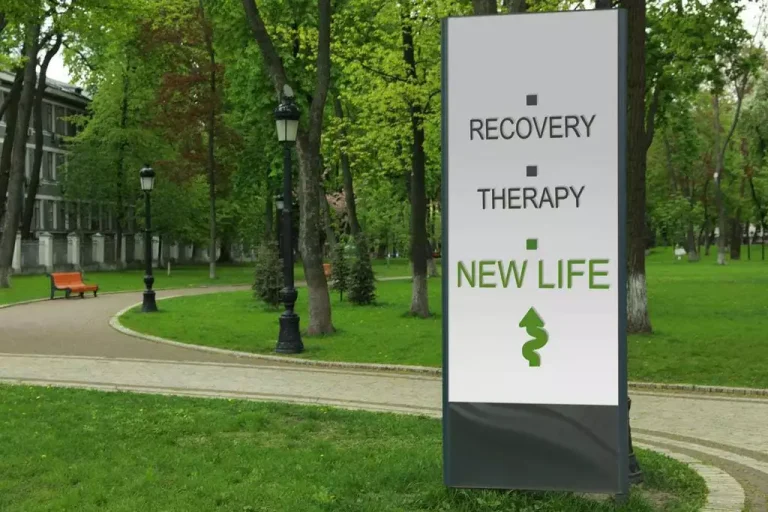
Participants included 240 college students with a trauma history who reported using alcohol within the past three months and completed measures of PTSD symptoms, emotion dysregulation, alcohol consumption, alcohol-related consequences, and negative affect. The six facets of emotion dysregulation were examined as mediators of the relationship between PTSD symptoms and alcohol-related consequences in the full sample and by sex. We originally hypothesised that people who experience a high volume of MBOs may perform differently in recall tasks compared to people who have never experienced an alcohol-related memory blackout.
PTSD Memory Loss Blackouts: Symptoms and Experiences
Our alcohol recovery programs are designed around the knowledge that each veteran has his or her own unique experience and challenges. Starting with alcohol detox, we can help you safely quit alcohol without the fear of relapsing. And from there, we can help you with recovery from residential alcohol treatment to ongoing, outpatient support. At Heroes’ https://ecosoberhouse.com/ Mile, you get a personalized care plan that uses compassionate, research-based therapies administered by veterans. While alcohol may provide temporary relief, it can worsen PTSD symptoms in the long run. Because alcohol impairs our cognitive function and emotional regulation, it makes it harder for those of us with PTSD to cope with intrusive memories.
- The consistent association between PTSD and AUD has led to debate about which condition develops first.
- However, the precise time when a blackout occurred is not possible to determine from participant self-report, nor did we examine the rate of recovery after blackout—our studies focussed on finding if any deficit was present after experiencing a blackout.
- The duration of PTSD blackouts can vary greatly, ranging from brief moments of disorientation to prolonged periods of lost time.
- With a brownout, you may be able to remember certain details from the period of time you were affected, but other portions of time can’t be recalled.
Strategies for managing blackouts

In addition, some pre-existing neuroanatomical differences may be present between individuals who progress into heavy drinking, and therefore regularly experience MBOs, and those who do not [24], suggesting a predisposition towards heavy alcohol drinking. Indeed, longitudinal work by Squeglia and colleagues [25] reported reduced grey matter volume in alcohol-naive adolescents who later transitioned to moderate binge drinking. Subsequent drinking by these individuals resulted in further abnormal reduction in the volume of subcortical and temporal brain structures [25]. Ultimately, each veteran’s experience is unique, and there is no experience that you have to go through to be considered traumatized.

Co-Occurring Disorders
Seeking treatment for both PTSD and alcohol dependency concurrently is crucial for a comprehensive recovery. In this blog post, we will explore everything about PTSD and alcohol addiction, along with integrated treatment approaches used to address both. To measure negative affect we used the Positive and Negative Affect Schedule – Negative Affect scale (PANAS-NA; Watson, Clark, & Tellegen, 1988). This is a 10-item scale that measures different aspects of negative affect such as feelings of guilt, hostility, and nervousness within the past week. The PANAS has been validated in a college student sample (Watson, Clark, & Tellegen, 1988), and Cronbach’s alpha for the Negative Affect scale for this sample was .89. Red arrows show the between group comparisons, comparing control and MBO participants before and after-alcohol.


For those of us struggling with the distress of PTSD, alcohol can transform from a social lubricant into a temporary respite from pain. 1.The inclusion of the quadratic growth term was recommended by a reviewer. Although the fixed effects for the quadratic growth parameter were not significant in the models, the inclusion of this term and its random variance component resulted in better fit to the data and hence it was included. The study of the relationship between early caregiving interactions, dissociation states, suboptimal mind-body interactions, and AUD is important for devising more efficient prevention and treatments. To review the literature on the association between a lack of coherent sense of self (i.e., dissociation) and alcohol use disorder (AUD). Understanding the role of dissociation in PTSD blackouts is crucial for developing effective treatment strategies.
Conditional disorders
These episodes can last for hours, days, or even longer, and are often accompanied by unplanned travel or wandering. Serum tryptophan and kynurenine levels were determined by high-performance liquid chromatography, using an ultraviolet absorption detector for kynurenine and a fluorescence detector for tryptophan on Agilent Infinity 1290 systems (Agilent Technologies, CA, USA). The ratio of kynurenine to tryptophan concentrations ptsd alcohol blackout × 103 (KT ratio) was calculated and used as a measure of the tryptophan degradation index. Serum BDNF concentration was determined by enzyme-linked immunosorbent assay (ELISA), using a commercially available kit Human BDNF Quantikine ELISA kit (R&D Systems, Minneapolis, MN, USA) based on a sandwich enzyme immunoassay technique. Steps for analysis were followed according to the manufacturer’s instructions.
Neuroimmune parameters in trauma exposure and PTSD

This emotion dysregulation may cause these individuals to misuse alcohol to alleviate negative emotionality. Emotion dysregulation has also been linked to alcohol-related consequences. Furthermore, negative mood regulation expectancies explained unique variance in predicting problem drinking, even after accounting for age, gender, and alcohol consumption. Regardless of age, recent studies show more frequent blackout experiences are related to an increase in memory lapse and cognitive difficulties even after alcohol misuse is corrected.
- A person who is blacked out may also throw up while sleeping, which could lead to an increased risk of choking or suffocating.
- Previous research supports the criterion validity of the sampling protocol (Gaher et al., 2014).
- When you’re blackout drunk, your hippocampus—the area of your brain in charge of memories—stops working properly.
- In this regard, autoregressive effects of dependence syndrome symptoms reflect the impaired regulation of alcohol characteristic of alcohol use disorder.
- Experimental studies have also shown evidence of a temporal relationship between state distractibility, a component of self-control, to alcohol consumption.
Develop Healthy Coping Skills With Reframe
- You may drink because you think using alcohol will help you avoid bad dreams or how scary they are.
- This within-person effect was significant after controlling for conduct problems at time t-1 (i.e., autoregression), drinking at time t, the temporal trend, and the day of the week covariates.
- Receive encouragement from people worldwide who know exactly what you’re going through!
- Moreover, there is a dearth of knowledge on the relationships between PTSD and other psychiatric conditions in non-Western settings.
- All word stimuli were generated from the MRC Psycholinguistic Database [39, 40] and were 5–9 letters in length, contained 2–4 syllables, and had a familiarity rating of 300–600.
- Due to the nature of traumatic events veterans experience such as being threatened, high stress environments, death, severe injuries, violence, and sexual trauma, veterans are often deeply impacted after combat.
Previous research with similar item sets support the criterion validity of the protocol (Simons et al., 2005; Simons et al., 2018; Simons, Wills, et al., 2016). Each random prompt included a checklist of 15 dichotomous DSM-IV PTSD symptoms occurring in the past 30 minutes. Only 15 of the 17 potential symptoms were included in the random assessments because two items refer to sleep behavior.
Study setting and participants
Our data suggests that in general they do not perform differently, however, a lack of differences between controls and high frequency MBO participants here does not necessarily imply that the two groups of participants are equal. Similarly, reduced event-related potential (ERP) amplitudes and delay of onset of early onsetting ERP components (e.g., P1, N2, P300, P3b) have been observed in basic cognitive tasks in heavy binge drinkers [e.g. It is reasonable to propose further examination of these performance differences using neuroimaging methods would constitute a more sensitive test of our hypothesis. We further aimed to determine whether an alcohol-induced MBO leads to impaired recall the next day which remains beyond the point of recovered sobriety. Examining individuals after an MBO we found delayed recovery of memory (i.e., performance not returning to baseline levels) in serial recall and depth of encoding tasks, and variable recovery in the free recall task. Concerning the free recall task, group level statistics indicated no difference between before-alcohol and after-MBO conditions, however the data is variable and 43.5% of participants exhibited significantly poorer recall after-MBO.
